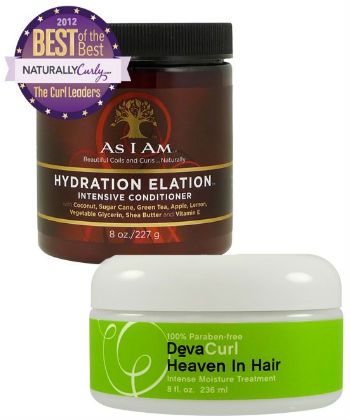
Written by Susan Walker of Earthtone Naturals via CurlyNikki
Deep conditioning is an extremely important practice for many naturals and as a result there are various ways women deep condition their hair. But what is the proper way to deep condition the hair? Why are some methods more important than others and what is a complete waste of time. The purpose of this article is to sift through all of the information to give the real truth about this process, and how to get the results your looking for.
Why condition?
What you’re trying to accomplish with conditioning is to restore or maintain the elasticity of the hair so that it’s better able to withstand combing, brushing, cleansing etc. without too much damage. Conditioning can also improve the appearance of the hair causing it to appear healthy.
Conditioning in general should accomplish the following:
- Ease combing (both wet and dry”>
- Increase softness to the hair
- Minimize flyaways
- Reduce the porosity of the hair
- Improve the manageability of the hair
For the most part, a regular moisturizing or hydrating conditioner is able to give these results. However if you hair is damaged then deep conditioning should be a part of your regimen. Damaged is any condition where one or more of the hair structures – the cuticle, cortex, medulla, etc. – are physically or chemically altered so much that they are unable to return to their original state. Cuticles can become cracked and frayed, the hair shaft can become cracked damaging the cortex and medulla, and the hair fiber can be exposed and unprotected in extreme cases. Common causes of hair damage include that from regular hair care practices such as mechanical manipulation, to extreme processes like chemical altering. Once hair has been damaged there is no way to repair it. The only way to rid the hair of damaged areas is by cutting. What products actually do is temporarily improve the state of the hair to make it look, feel and perform like hair that is healthier, as well as prevent future damage.
Is your hair damaged?
Damaged hair typically has the following characteristics:
- Loss of elasticity
- Breaking hair
- Dull-looking hair
- Dry and brittle
- Highly porous
- Split ends or mid-shaft splits
- A lot of tangling
What type of conditioner do you need?
The type of conditioner you use for your hair will depend on your hair texture and the state of your hair.
For example, fine limp hair will need a conditioner that can increase body and thick, dry hair will require a conditioner that can be used for softness and moisture. Reconstructors containing a lot of protein should be used on hair that is fine, limp and damaged.
Moisturizing deep conditioners with a lot of oils, emollients and moisturizers should be used on hair that requires softening or is very dry. If your focus is on real deep conditioning then the type of product you use will be important, as well as how that conditioner is used on the hair.
In order to get the best results enough of the conditioning agents must bind to the hair and sufficient amounts of active ingredients must penetrate into the cortex of the hair.
This occurs under one or a combination of the following situations:
- High pH
- Heat
- Time
PHOTO COURTESY OF THEMANEOBJECTIVE
 High pH
High pH
A higher pH results in cuticles that are more open. Hair is most vulnerable in this state but it’s also a great opportunity for the conditioner to really penetrate into the cortex of the hair rather than if the cuticles are closed. Cuticles are typically opened when hair is relaxed or chemically processed in some way. For natural hair, the cuticles are typically not really open unless the hair is very porous or damaged in some way. Using baking soda and castile soap (which are high pH ranges”> for cleaning can result in the cuticles opening. I don’t have any experience with either one of these cleansing agents to recommend how to properly use them and as a result, time and the use of heat with the conditioner will be discussed in order to maximize conditioning results.
How long should you leave it in
The longer the contact between the conditioner and the hair, the more the conditioning agents can bind to the hair, and active ingredients can penetrate into the cortex. Every ingredient in a conditioner has its own ability to adsorb (adhere”> to the surface of the hair and/or penetrate into the hair. Many factors depend on the use of high or low molecular weight proteins, the use of oils with long or short fatty acid chains etc. The key ingredients that can stick to hair like the surfactants, hydrolyzed proteins and polyquats will do so within a few seconds of applying the conditioner. If left on hair for longer the more they will be absorbed. In general the conditioning effect is present for up to 25-30 minutes. After this time absorption of active ingredients has reach its maximum and there is no real added benefit to leaving a conditioner on the hair after 30 minutes.
The Use of Heat
As the hair increases in temperature the possibility of the conditioners penetrating the cortex also increases. What temperature are we talking about? The hair should be at about 60 degrees Celcius (about 140 degrees Fahrenheit”> which can be achieved at the medium setting of an electric heat cap.
In Part 2 of this series we’ll take a look at the ingredients you need to look for in an great deep conditioner and the steps you should take to get the most out of your deep conditioning.
